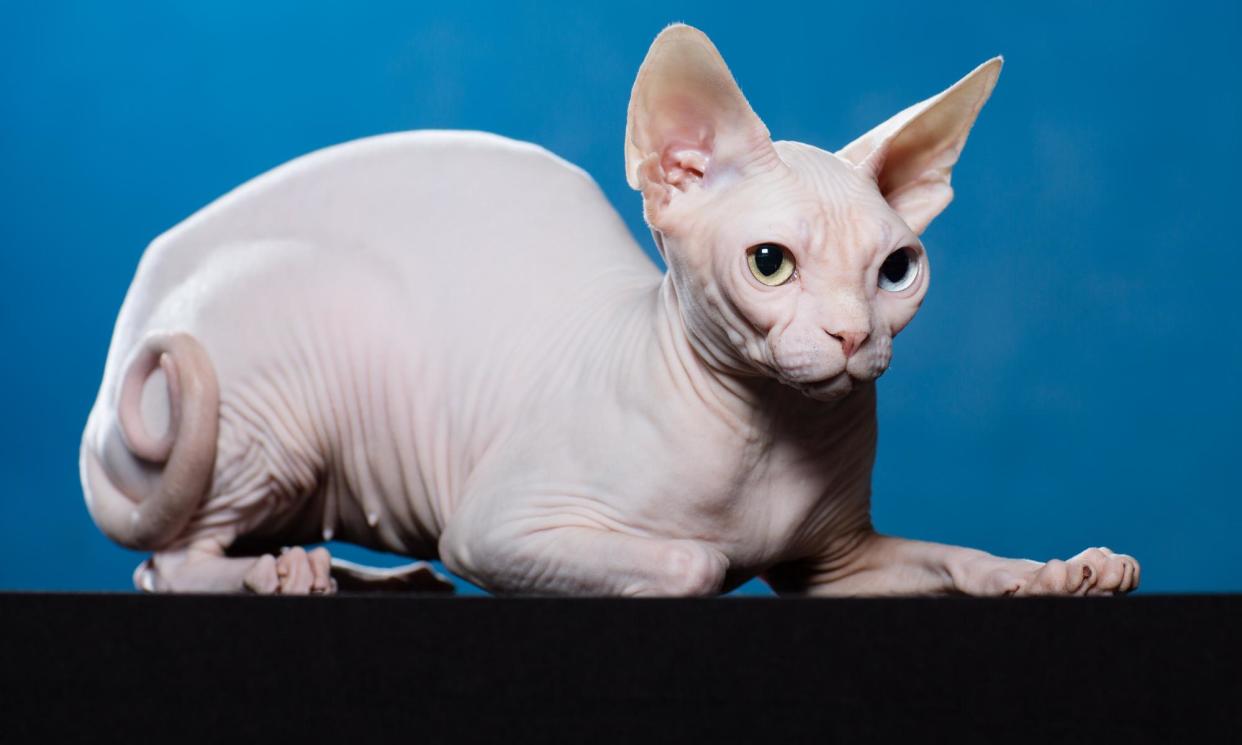Sphynx has lowest life expectancy of domestic cat breeds, research finds

They may sound ancient but you should avoid a sphynx cat if you want a pet to grow old with, research suggests.
Experts have revealed how many years on average domestic cats in the UK have left to live based on their current age.
The results suggest burmese and birman cats have the highest life expectancy, with kittens in their first year of life expected to live for another 14.4 years. Unsurprisingly, the figures for remaining life expectancy decline as cats get older.
Related: ‘The vet presented it as: if you care, you pay’: who really profits from poorly pets?
The team said such figures are important because they offer a glimpse into the future. “Essentially what we’re doing is we’re giving some level of statistical certainty, where previously it was just guesswork,” said Dr Dan O’Neill, a co-author of the study from the Royal Veterinary College (RVC).
That, he added, can be important for prospective owners, rehoming charities and vets, while it can also help those who may be weighing up the value of costly and painful medical or surgical care for their cat.
Writing in the Journal of Feline Medicine and Surgery researchers from the RVC and the National Chung Hsing University in Taiwan, reported how they used data from 7,936 veterinary-registered cats in the UK that died between 1 January 2019 and 31 March 2021 to calculate the average remaining lifespan for each year of life.
Overall, the average remaining life expectancy for cats that are in their first year of life is 11.7 years, with the figure higher – at 12.5 years – for females, and lower – at 11.2 years – for males.
The team found crossbreeds (which made up 88% of the cats) have a higher life expectancy than purebreeds, at least until they reach old age, with the former having a remaining life expectancy of 11.9 years in their first year of life, compared with 10.4 years for the latter.
O’Neill said such differences are huge. “If somebody’s priority is they want a cat that is going to defer death for as long as possible, on average, we now have the evidence to say [get a] female and crossbred,” he said.
Looking at specific breeds with at least 15 deaths recorded, siamese cats in their first year of life are expected to live for another 11.7 years, while for bengal cats the figure is 8.5 years. The team adds the short life expectancy for sphynx cats may be related to their increased risk of various diseases.
The team adds unneutered cats have a shortened life expectancy, although that is probably down to them being more likely to be neutered as they get older, while cats of median body weight have a longer lifespan than those that weigh more or less.
O’Neill said the data gives cat lovers a tool to understand and predict the future lifespans of their cats. “Essentially this is now giving the power to the public,” he said.


